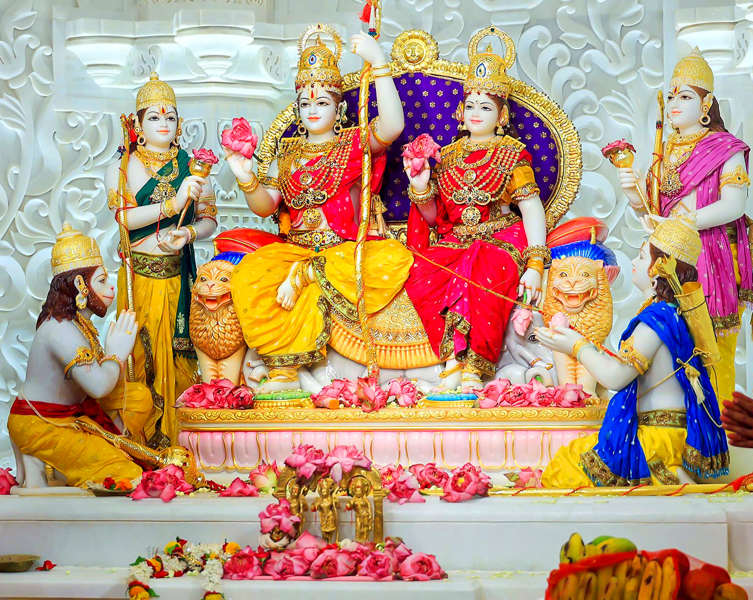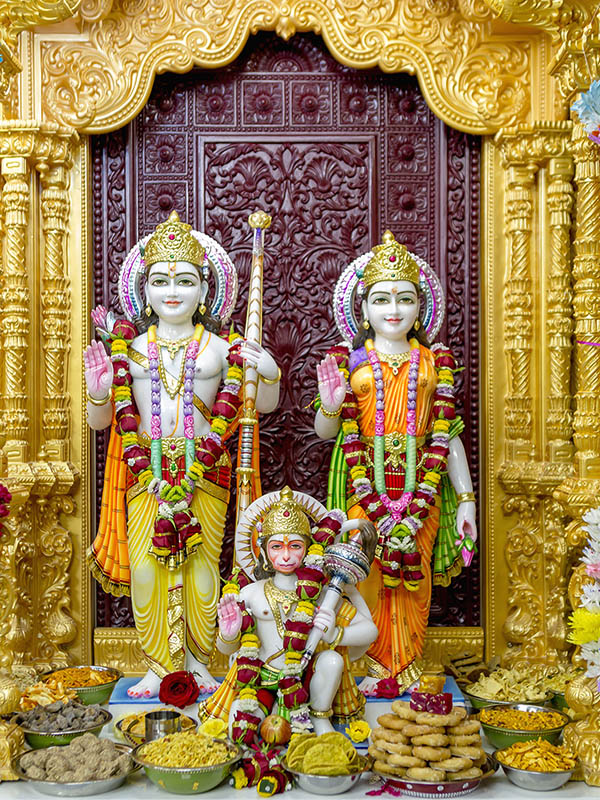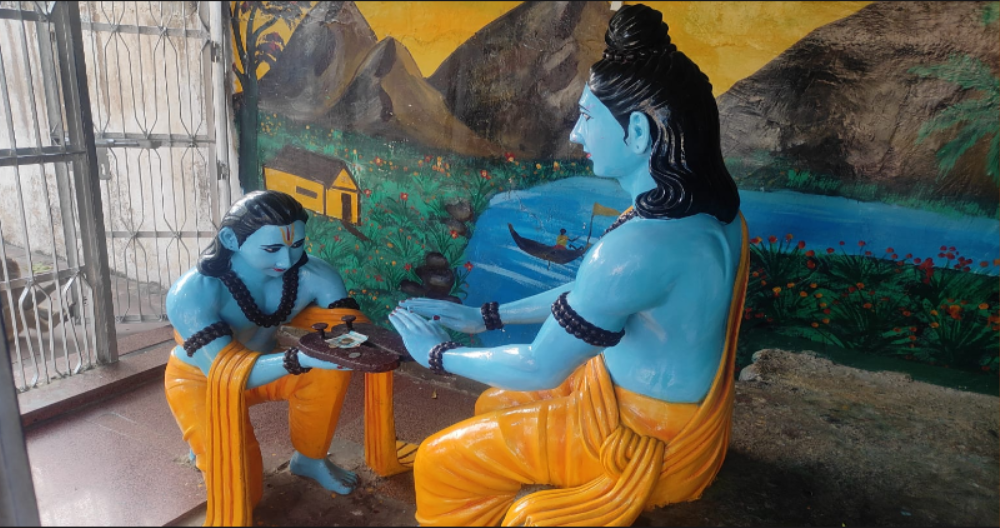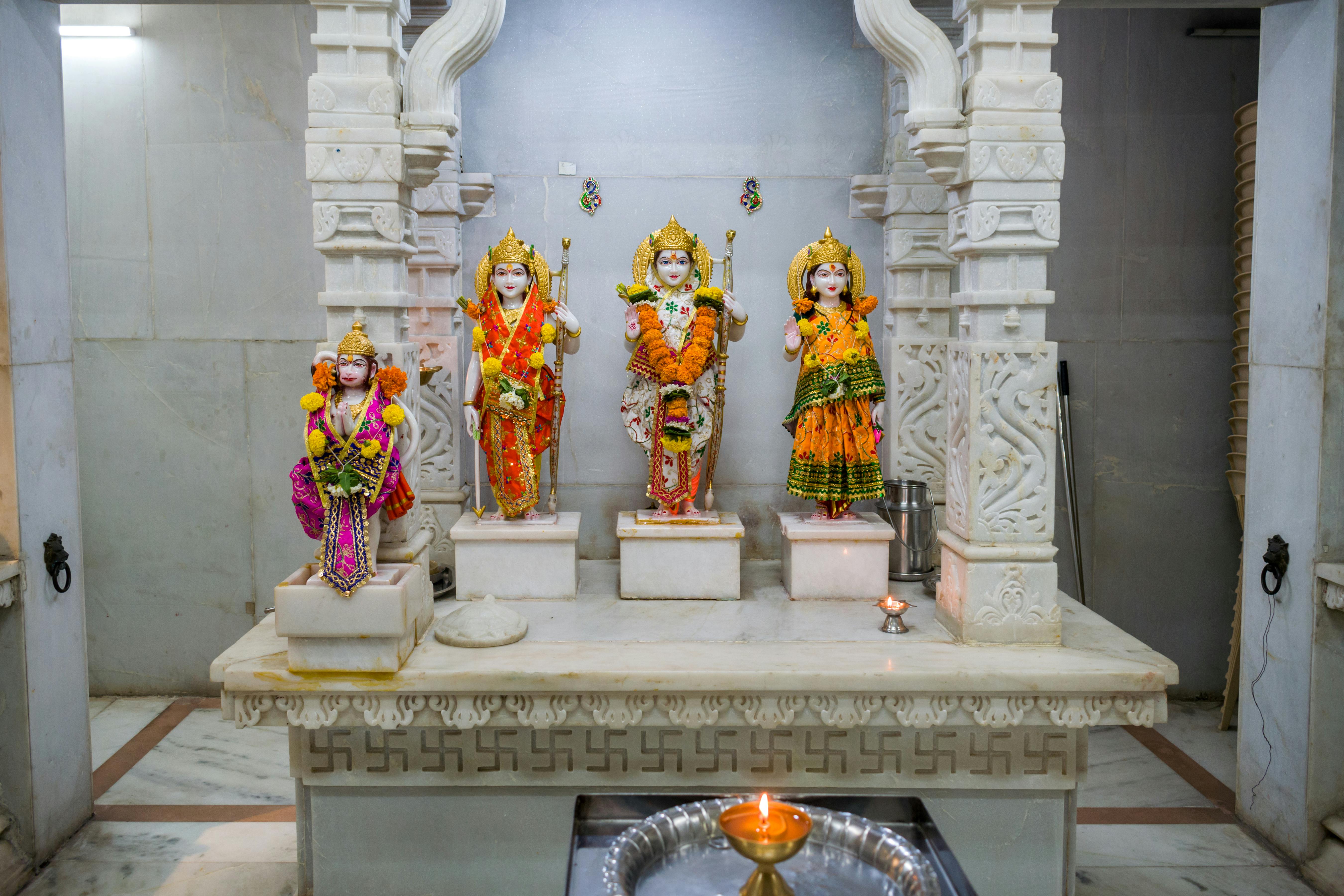Exploring the Holy Routes to Love and Devotion from the Divine
The nine forms of bhakti are not simply ritualistic practices; rather, they embody various emotional and spiritual attitudes capable of transforming the devotee’s consciousness. Each form caters to distinct temperaments and spiritual inclinations, rendering the path of devotion both inclusive and adaptable to individual nature.
“Listening to the name, form, qualities and effects of Lord Vishnu, chanting and remembering them, serving, worshiping and worshiping the feet of Lord Vishnu and feeling of servitude, friendship and surrendering oneself to God – these are the nine types of devotion.”
Śrīmad-Bhāgavatam 7.5.23-24
1. Shravana (श्रवण) – Listening to Divine Stories
The Practice of Sacred Listening
Listening with devotion and love to the nectar-filled stories of God’s name, form, qualities, effects, divine play, elements, and secrets, as told by loving devotees of God, and becoming enchanted in love after listening, is a form of devotion.
The first form of devotion is to associate with saintly people
(प्रथम भगति संतन्ह कर संगा)
(Shri Ram Charit Manas)
“Discover the Truth by seeking guidance from a spiritual master. Ask him respectfully and offer your service. An enlightened Saint can share wisdom with you since he has experienced the Truth.”
BG Chapter 4, Verse 34
2. Kirtana (कीर्तन) – Singing Divine Praises
The Joy of Sacred Sound
Kirtana involves singing, chanting, or speaking about God’s names, qualities, and glories. This practice harnesses the power of sound vibration to elevate consciousness. When you chant the name of God, along with His form, attributes, effects, character, elements, and mysteries, do so with deep reverence and love. This practice can evoke sensations such as excitement in the body, a feeling of constriction in the throat, tears of joy, and a sense of enchantment in the heart. This experience embodies the essence of Kirtan-Bhakti.
The fourth is to sing of my countless virtues with a heart free from all deceit.
(चौथि भगति मम गुन गन करइ कपट तजि गान)
(Shri Ram Charit Manas)
“Always singing My divine glories, striving with great determination, and humbly bowing down before Me, they constantly worship Me in loving devotion.”
Bhagavad Gita: Chapter 6, Verse 30
3. Smarana (स्मरण) – Remembering the Divine
Constant Remembrance
Smarana is the practice of continuously remembering God throughout daily activities. It involves keeping the divine presence alive in one’s consciousness at all times.Reflecting on the essence of God’s Name, Form, Attributes, Effects, Leela, Elements, and Mysteries, which have been listened to and read with love and devotion, and while doing so, losing awareness of the body and becoming absorbed in God, represents true remembrance and devotion.
The constant chanting of my name while maintaining unwavering faith in me
(मंत्र जाप मम दृढ़ बिस्वासा)
(Shri Ram Charit Manas)
“Thus, O Arjuna, consistently keep Me in your thoughts at all times during battle. By dedicating your mind and intellect to Me, you will undoubtedly reach Me; there is no question about this.” Bhagwad Geeta Ch. 8.7
4. Padasevana (पादसेवन) – Serving the Divine Feet
Humble Service and Surrender
Padasevana represents the attitude of humble service to God, symbolized by serving the divine feet. This practice embodies complete surrender and the dissolution of ego. By eliminating affection, ego, and pride, one progresses towards devotion with the objective of achieving unconditional love at the feet of God.
The third form of devotion is to humbly serve at the feet of one’s Guru
(गुर पद पंकज सेवा तीसरि भगति अमान)
(Shri Ram Charit Manas)
अति आनंद उमगि अनुरागा। चरन सरोज पखारन लागा॥
बरषि सुमन सुर सकल सिहाहीं। एहि सम पुन्यपुंज कोउ नाहीं॥4॥
“With immense joy and devotion, Kevat began to lovingly wash the lotus feet of the Lord. The celestial beings, filled with envy at his fortune, showered flowers from the Heavens and exclaimed, “There is no greater treasure trove of virtues than Kevat, the humble boatman.” (Shri Ram Charit Manas)
5. Archana (अर्चन) – Ritual Worship
Sacred Worship and Offerings
Archana involves formal worship through rituals, offerings, and ceremonies. This practice includes puja, aarti, and various forms of ceremonial devotion. God accepts anything that is offered with a loving heart.
“If someone presents to Me with sincere devotion a leaf, a flower, a fruit, or even water, I joyfully accept that offering made with love by My devotee in a state of pure consciousness.”
Bhagavad Gita: Chapter 9, Verse 26
“Worshiping the feet of the Lord is the root of heaven and salvation for the living beings and also of all the wealth and all the accomplishments in the mortal world and the underworld.”
Shrimad Bhagwatam 10/81/19
6. Vandana (वन्दन) – Prayer and Prostration
Humble Supplication
Vandana encompasses prayer, prostration, and humble supplication before the divine. It represents the complete surrender of the devotee’s will to God’s will.
Prostration melts away ego and pride, and fosters surrender and trust. Prayer cultivates spiritual openness and forges a divine connection.
सीय राममय सब जग जानी । करउँ प्रनाम जोरि जुग पानी ॥
Recognizing that this whole world is filled with Shri Sita-Rama, I bow to it with my hands together.
(Shri Ram Charit Manas)
“O Lord of boundless strength, I greet You from every direction, truly from all angles! You possess limitless courage and power, and are present in all things; therefore, You are everything.”
Bhagavad Gita: Chapter 11, Verse 40
7. Dasya (दास्य) – Servitude
The Servant’s Devotion
Dasya bhava involves adopting the attitude of a devoted servant toward God. This relationship is characterized by loyalty, obedience, and selfless service.
Dasya-bhakti is practiced to achieve a profound love for God and to remain in proximity to Him for ongoing and daily service. Through this devoted servitude, one can effortlessly reach God.
सुनहु बिभीषन प्रभु कै रीती। करहिं सदा सेवक पर प्रीति॥3॥
“Hear me, O’ Vibhishan, it is the essence of the Lord to continually bestow His love upon His devotees”
(Shri Ram Charit Manas)
सो अनन्य जाकें असि मति न टरइ हनुमंत।
मैं सेवक सचराचर रूप स्वामि भगवंत॥
“And O Hanuman, the only one who never loses his understanding that he is a servant and this entire animate and inanimate world is the form of his Lord.”
(Shri Ram Charit Manas)
8. Sakhya (सख्य) – Friendship
Divine Friendship
Sakhya bhava represents the relationship of friendship with God, characterized by intimacy, love, and companionship without formality or fear.
To attain Sakhya-bhakti, one should enjoy the company of God’s loving friends, study their biographies, and listen to their and God’s qualities, pastimes, and effects by their loving devotees.
“Listen again to my supreme teaching, the most sublime secret knowledge. I am revealing it for your benefit because you are my dear friend.”
Bhagavad Gita: Chapter 18, Verse 64
Upon touching the body of His beloved friend, the wise brāhmaṇa, the Supreme Lord with lotus eyes felt overwhelming bliss and shed tears of love.
Srimad Bhagavatam 10.80.19
9. Atma-nivedana (आत्मनिवेदन) – Self-Surrender
Complete Self-Offering
Atma-nivedana represents the highest form of bhakti, where the devotee completely surrenders their entire being to God, holding nothing back.
Being free from attachment and ego, surrendering yourself and all your actions along with your body, mind, wealth, and people to God with faith and utmost love is self-surrender devotion.
“Always think of me, become my devotee, worship me. By surrendering your mind and body to me, you will surely attain me.”
Bhagavad Gita: Chapter 9, Verse 34
“Give up all forms of dharma and just surrender to Me. I will free you from all sinful actions; do not be afraid. “
Bhagavad Gita: Chapter 18, Verse 66
Integrating the Nine Forms
The beauty of Navadha Bhakti lies not in practicing all nine forms simultaneously, but in recognizing how they naturally complement and enhance each other. A devotee might begin with one form that resonates deeply and gradually incorporate others as their spiritual journey unfolds.







